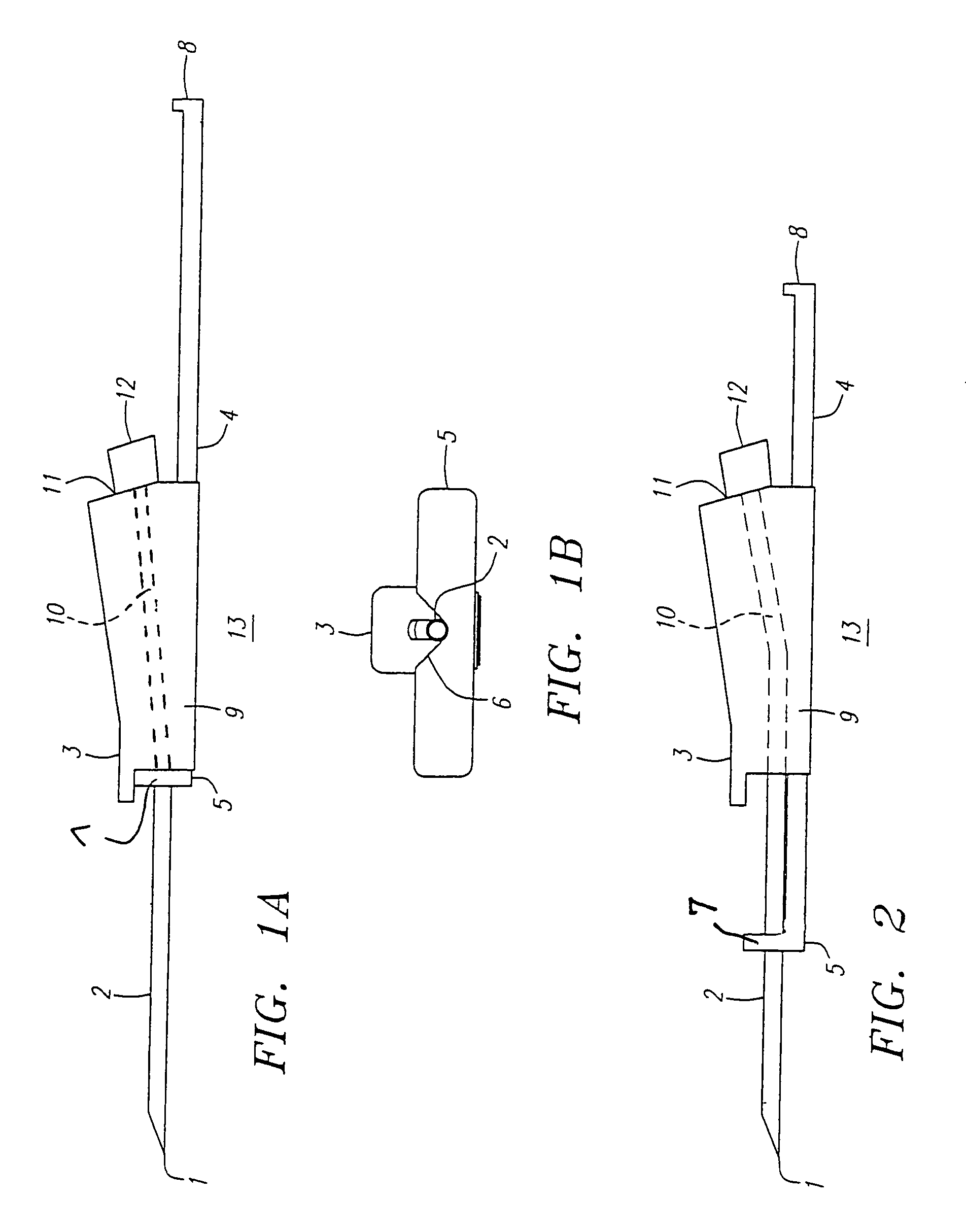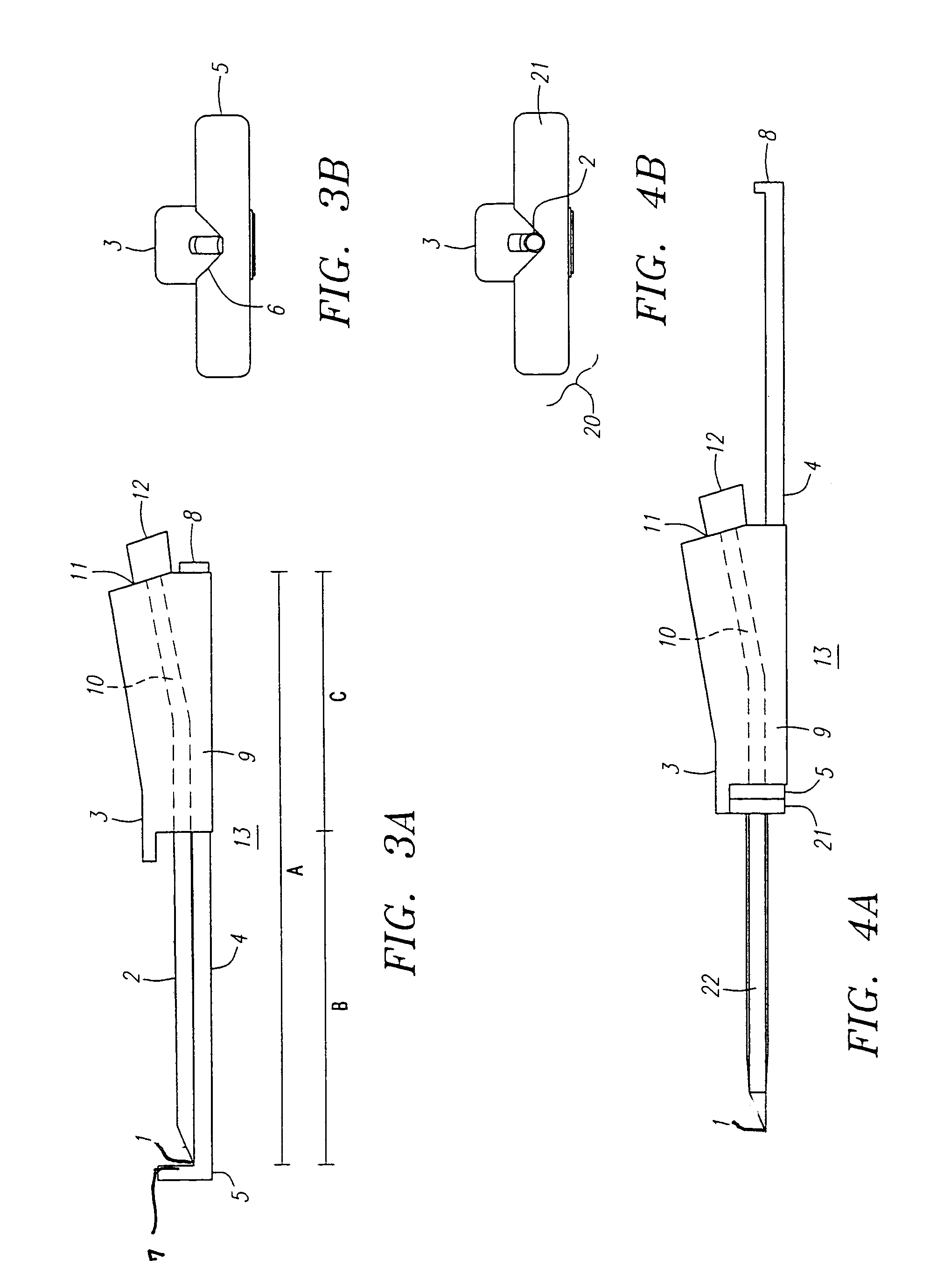Safety needle introducer and universal needle protector for vascular access devices
a safe and universal technology, applied in the direction of guide needles, needles infusion, catheters, etc., can solve the problems of healthcare workers with serious occupational hazards, pathogens in infected patients posing a risk of transmitting deadly diseases to healthcare workers, and the exposed sharpened end of needles
- Summary
- Abstract
- Description
- Claims
- Application Information
AI Technical Summary
Benefits of technology
Problems solved by technology
Method used
Image
Examples
Embodiment Construction
[0029]Referring to FIGS. 1A and 1B, a needle for penetrating the skin and, for example, providing access to the venous or arterial system has a point 1 at the distal most end and a cannula 2 which contains a bore (not shown) through the entire length thereof for fluid communication through the needle cannula 2. The proximal end of the cannula 2 terminates in a needle protector handle 3. A proximal portion of the cannula is contained within the handle 3 and a length thereof is preferably over-molded within the body or housing of the handle 3 such that the needle cannula 2 traverses less than half of the overall axial length of the handle 3 and terminates in a flashback chamber 10 that is contained within the body of the handle 3 and is in fluid communication with the cannula 2. The chamber 10 features a sampling port 11 at the proximal end that is preferably molded directly into the body of the handle 3. The sampling port 11 has a closure 12 that sealingly engages the port 11 to prev...
PUM
 Login to View More
Login to View More Abstract
Description
Claims
Application Information
 Login to View More
Login to View More - R&D
- Intellectual Property
- Life Sciences
- Materials
- Tech Scout
- Unparalleled Data Quality
- Higher Quality Content
- 60% Fewer Hallucinations
Browse by: Latest US Patents, China's latest patents, Technical Efficacy Thesaurus, Application Domain, Technology Topic, Popular Technical Reports.
© 2025 PatSnap. All rights reserved.Legal|Privacy policy|Modern Slavery Act Transparency Statement|Sitemap|About US| Contact US: help@patsnap.com



